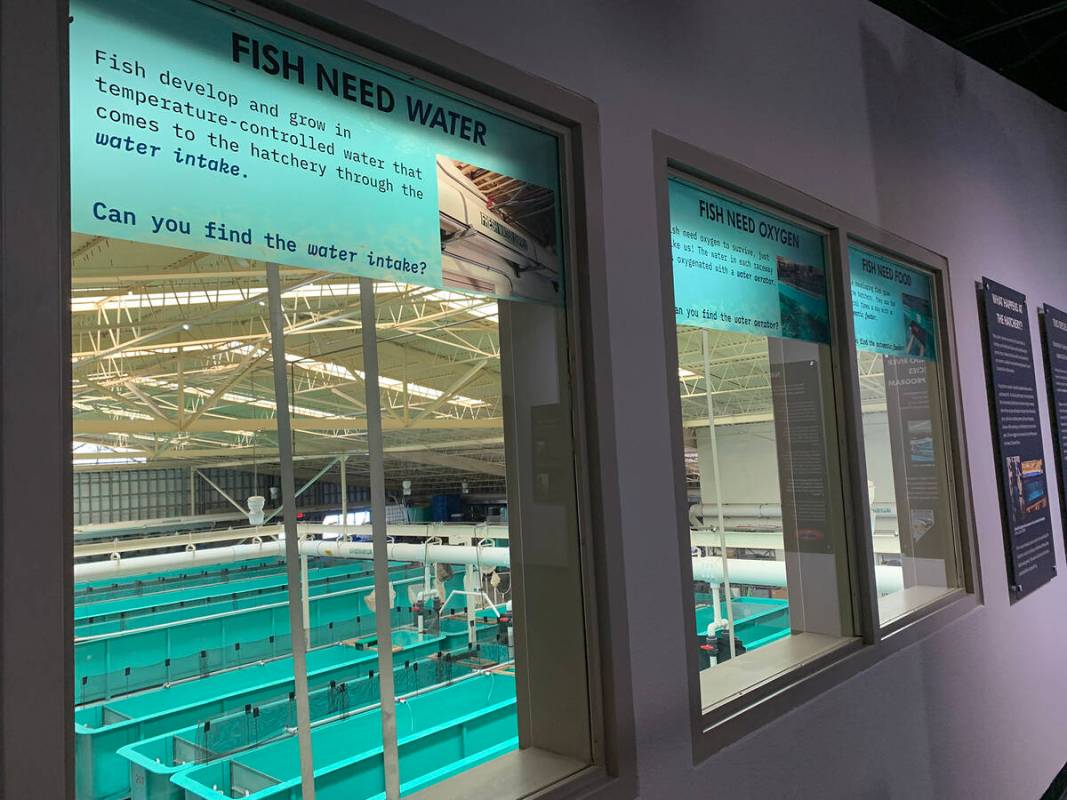
Visitors to Lake Mead National Recreation Area can now learn more about the native fish that inhabit the lake and what it takes to raise them.
After years of being closed, the Lake Mead Fish Hatchery Visitor Center is set to reopen next month.
The center is filled with displays that showcase the hatchery’s history and work, the species of fish and amphibians that can be found in the recreation area and the role the Colorado River plays in the Southwest.
The only thing visibly absent at the moment is fish.
According to Jess Brooks, wildlife education coordinator for the Nevada Department of Wildlife, the rapid decline of the water level in Lake Mead raised the temperature of the water pumped into the raceways for fish, making it too warm for their survival.
She said staff was able to halt operations before any of the fish on the premises died, but it will take about two years to get cooler water pumped into the tanks.
“It’s definitely hard to work at a hatchery and not have any fish,” said Amos Rehm, a biologist with the Nevada Department of Wildlife.
In the meantime, Rehm said the lack of fish at the hatchery gives them the time they don’t usually have to complete much-needed maintenance projects.
“We will hit the ground running,” he said.
First completed in 2006, the visitor center was open for just a short time before invasive quagga mussels were discovered in Lake Mead and the hatchery’s water system. Hatchery operations, including the visitor center, were shut down.
At the same time, the drought started raising the temperature of the water in Lake Mead and dropping levels precluded the rearing of rainbow trout, which had been the focus of hatchery activities since it was built in the early 1970s.
The closure allowed NDOW to make some adjustments to the hatchery, allowing it to raise and release endangered Razorback Suckers and Bonytail. Both species are native to the Colorado River. They also raise endangered Moapa dace, which lives in the warm springs of the upper Muddy River.
“Our species conservation plan is vital to what we do here and in the community,” said Jack Robb, deputy director of NDOW.
The hatchery raises about 7,000 Bonytail and 20,000 Razorback Suckers a year, Amos said.
There are, however, usually three to four times more fish on site at the hatchery as it takes about two years to raise them from larvae to a size where they can be released, which is a minimum of 12 inches, Rehm said. This gives them a greater chance of survival.
The change in operations at the hatchery sparked the need to update the exhibits in the visitor center so it could focus on its conservation activities.
Though the visitor center is not scheduled to open until sometime in late April, Brooks said several people stopped by once the closed sign was removed.
The remodeled facility includes an education center where classes will be offered to area school children as well as the general public, Brooks said. These will include tours of the hatchery and activities.
Brooks said the team worked diligently for five months to get all the displays ready for the opening.
“A project like this generally takes 18 or more months. We did it with a small team who are passionate about their work. They are like MacGyvers.”
The Lake Mead Fish Hatchery Visitor Center is at 245 Lakeshore Road.
Hali Bernstein Saylor is editor of the Boulder City Review. She can be reached at hsaylor@bouldercityreview.com or at 702-586-9523. Follow @HalisComment on Twitter.